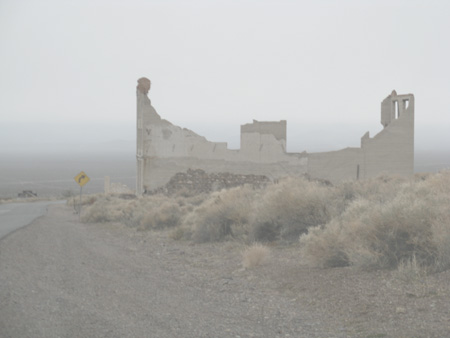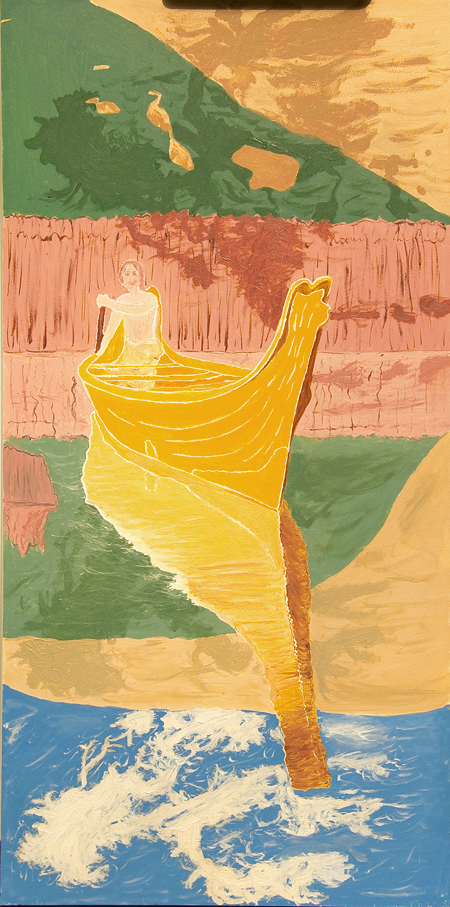Posted by Steve Durbin on May 16th, 2009

I just visited the Walker Art Center in Minneapolis, where I saw, among other things, a couple of Rothko paintings and a Barnett Newman. Maybe that’s why this installment of the continuing Yellowstone day is more colorful than previous ones (see parts one and two).
more… »
Posted by Steve Durbin on May 6th, 2009
Continuing my recent Yellowstone visit after leaving the geyser basin, I headed for for the Canyon area. In the past I’ve tended to focus on the magnificent falls there. This year, extra deep snow made access to the best locations difficult (not to mention forbidden, though that’s of lesser concern). I spent my time instead looking at the steeply sloping walls of the V-shaped canyon carved by the river.
 1
1
more… »
Posted by June Underwood on May 4th, 2009
A reference to a recent New Yorker Critic at Large (March 30th) review suggests that a work of art is good if it rises out of necessity and if the artist is capable of carrying out the idea to its appropriate end. As a letter writer paraphrases:
“This matters; this has purpose” and “I can do this, I am able, I can carry out this task to its appropriate end” (correspondence from Joachim B. Lyon, Stanford, California, New Yorker, May 4, 2009).
I found these notions both bemusing and contra-indicated. What do you think?
(Oh, and here’s an image from Rhyolite Nevada ghost town. I don’t know if it has either purpose or, if I paint it, as I intend to do, if I am adequate to the chore.)

Posted by Steve Durbin on April 27th, 2009
I drove through parts of Yellowstone a week ago, just a day after the Park (as it’s known locally) opened to automobiles. (I had been hoping to bike in the car-free weeks before that, as I normally do, but the weather was uncooperative.) Despite my regular visits, and posts to this blog, I realized I’ve never shown any photographs of the thermal features for which Yellowstone is justly famous. I have made a few before—surprisingly few—but somehow they never appealed much to me. For some reason I can’t put my finger on, this time felt different, and there are several images I’m willing to publish.

more… »
Posted by Birgit Zipser on April 24th, 2009
Having lots to do, I treated myself to a yellow canoe.

12 x 24, oil on board
I had further plans with this picture.
But having lived with it now for two weeks, I am hesitant to change anything. What do you think?
Posted by David on April 21st, 2009

Kimono, 2009, acrylic on wood, 48 3/4 x 36 3/4 inches
more… »
Posted by June Underwood on April 18th, 2009
As Steve noted not long ago, perception — how, as well as what, we see and record — is prime territory for this group. Some weeks ago I wrote about painting in the desert, the Great Basin to be more precise, and, even more specifically, the Amargosa Plain just outside of Death Valley.
After having spent 6 weeks in the desert, perceiving and painting, mostly plein air, I am now back in Portland reading about desert perception in William L. Fox’s The Void, the Grid, and the Sign.
Fox has spent most of his life in and around a variety of deserts and back-of-nowhere lands, but in The Void he’s primarily concerned with the Great Basin, that large space between the Rockies and the Sierras, where water flows in, but never out, where there is no river coursing to the sea. He says that outside of Afghanistan, this area contains the most mountain ranges (316) in the world, but there are also 90 basins, places where what little water exists is captured between ranges and sinks or evaporates. The best known of these basins is perhaps Death Valley, although that lies outside Fox’s attention. The place I was painting, the Amargosa Plain, is also just outside his wide-ranging travels. However, much of what he says is apropos of the Amargosa and Death Valley.

Death Valley at the Beatty Cut-off, March, 2009
more… »

 1
1



